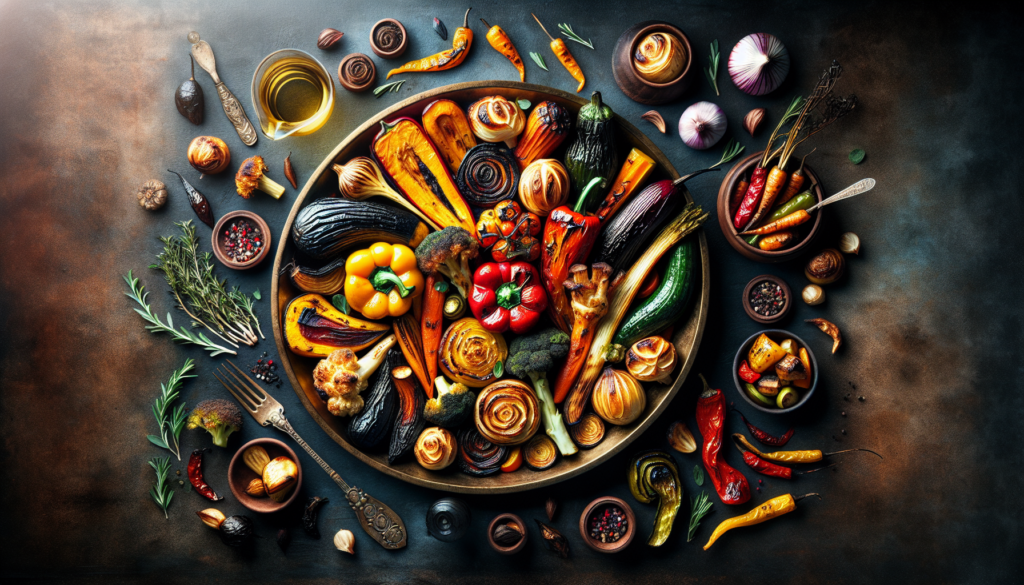In this article, you will embark on an exciting culinary journey as we explore the captivating world of cooking methods. From the classic and comforting art of roasting to the innovative and precision-driven technique of sous vide, we will delve into the various approaches that can elevate your culinary skills to new heights. Join us as we uncover the secrets behind these cooking methods, unlocking a world of flavor and creativity in your kitchen. So grab your apron and prepare to be inspired as we unravel the mysteries of cooking from roasting to sous vide.
Roasting
Definition and History
Roasting is a cooking method that involves cooking food in an oven or over an open flame, typically using dry heat. This method has been used for centuries and is deeply rooted in culinary traditions around the world. Roasting is known for producing a rich, savory flavor and a crispy exterior, making it a popular cooking technique for meats, vegetables, and even fruits.
Historically, roasting was primarily done over an open fire, with food skewered or placed on a spit and rotated to ensure even cooking. The invention of ovens revolutionized roasting, allowing for more controlled heat and easier cooking. Today, roasting is a versatile cooking method that can be done in various ways, such as roasting in a conventional oven, using a rotisserie, or even grilling.
Benefits of Roasting
Roasting offers numerous benefits that make it a preferred cooking method for many. Firstly, roasting enhances the natural flavors of the ingredients, allowing them to develop a deep, rich taste. The dry heat used in roasting caramelizes the sugars present in food, resulting in flavorful and aromatic dishes.
Another advantage of roasting is the ability to achieve a crispy and golden brown exterior. This desirable texture adds a delightful contrast to the tender and juicy interiors of roasted meats and vegetables. Roasting also helps to retain the natural moisture of the food, resulting in succulent and moist dishes.
Furthermore, roasting gives the opportunity to infuse flavors by adding seasonings, herbs, and spices before cooking. This allows for endless possibilities in creating unique and delicious flavor combinations. Roasting also requires minimal effort during the cooking process, as it mostly involves prepping the ingredients and allowing them to cook slowly in the oven.
Popular Roasted Dishes
Roasting is a versatile cooking method that can be applied to a wide range of ingredients. One of the most popular roasted dishes is roast chicken, with its crispy skin and tender meat. Other popular roasted meats include beef, pork, and lamb, which are often seasoned with herbs and spices to enhance their flavors.
Roasted vegetables such as potatoes, carrots, Brussels sprouts, and bell peppers are also well-loved side dishes. The high heat of roasting brings out the natural sweetness of the vegetables while creating a caramelized exterior. Roasted root vegetables like sweet potatoes and parsnips are particularly delicious when seasoned with herbs like rosemary and thyme.
Roasting can even be used for dessert! Roasted fruits like apples, pears, and peaches can be served as a sweet and tangy treat on their own or added to pies, tarts, or crumbles. The heat of the oven caramelizes the fruit sugars, intensifying their flavors and creating a delightful dessert experience.
Key Equipment for Roasting
To effectively roast your dishes, there are a few key pieces of equipment you’ll need. The most essential item is an oven or a grill with an oven function. A conventional oven is perfect for roasting, as it allows for consistent temperature control and even heat distribution.
Roasting pans or baking sheets are necessary to place your ingredients in during the cooking process. These pans come in various sizes and materials, such as stainless steel or non-stick, and can be used to catch drippings, facilitate browning, and ensure easy cleanup.
A meat thermometer is also a valuable tool when roasting meats, as it allows you to accurately monitor the internal temperature and ensure your dish is cooked to perfection. Additionally, a basting brush or spoon will come in handy for applying marinades or brushing on flavorful oils and juices during the roasting process.
Step-by-Step Guide to Roasting
- Preheat your oven to the desired temperature according to your recipe.
- Prepare your ingredients by cleaning, marinating, and seasoning them as desired.
- Place the ingredients in a roasting pan or on a baking sheet, making sure they are evenly spaced and not overcrowded.
- Place the pan in the preheated oven and cook according to the recipe’s recommended cooking time and temperature.
- For larger cuts of meat, it is advisable to use a meat thermometer to check the internal temperature for doneness.
- While the food is roasting, you can baste it periodically with flavorful liquids to enhance the taste and keep it moist.
- Once the food is cooked to your desired level of doneness, remove it from the oven and let it rest for a few minutes before serving. This allows the juices to redistribute, resulting in a more flavorful and tender dish.
Roasting is a fantastic cooking method that brings out the best flavors and textures in your ingredients. Whether you’re roasting a succulent piece of meat, a medley of vegetables, or even a sweet treat, this method is sure to impress your taste buds and leave you craving more. Get ready to savor the mouthwatering results of your roasting adventures in the kitchen!




